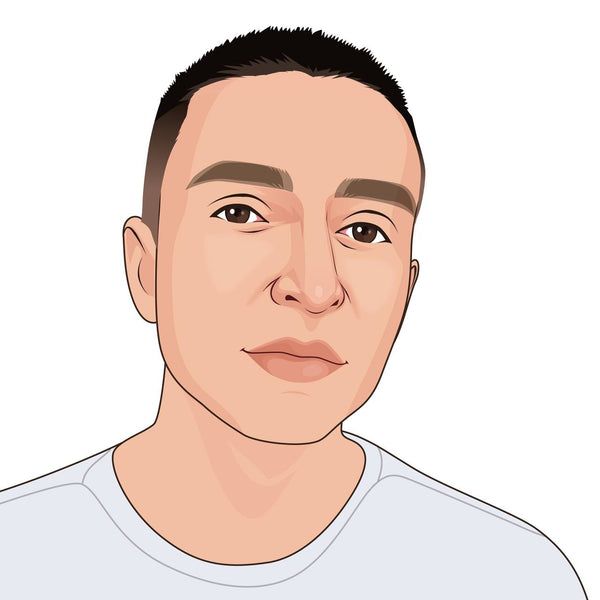Your email greeting is the first thing recipients see when they open your message, so it's crucial to get it right. In this comprehensive guide, we will walk you through the dos and don'ts of email greetings, providing you with practical tips and examples along the way. Whether you're a customer service representative, a sales and marketing professional, or a human resources professional, this article will equip you with the knowledge and expertise to start your emails with confidence and professionalism.
The Importance of Email Greetings
Email greetings play a crucial role in setting the tone for effective communication. They are the first impression recipients have of your message, and can greatly impact how your email is received. A well-crafted greeting shows professionalism, respect, and attention to detail. It can help establish a positive rapport with the recipient and create a favorable impression. On the other hand, a poorly executed greeting can come across as impersonal or unprofessional. By understanding the importance of email greetings and implementing best practices, you can enhance your communication skills and make a strong first impression in your professional interactions.
How To Start an Email With Greetings
To start an email with greetings, follow these step-by-step guidelines:
- Address the recipient by name: Begin your email with a personalized greeting by addressing the recipient by their name. This adds a personal touch and shows that you have taken the time to identify the individual you are contacting.
- Use a formal salutation for professional contacts: If you are emailing someone in a professional setting, such as a corporate executive or a client, opt for a formal salutation like "Dear Mr./Ms. [Last Name]" or "Hello [First Name] [Last Name]." This demonstrates respect and professionalism.
- Consider the recipient's position: Tailor your greeting based on the recipient's position and relationship with you. For example, if you are emailing a colleague or someone you have an established rapport with, you can use a more casual greeting like "Hi [First Name]" or "Hello [First Name]."
- Be mindful of cultural differences: If you are communicating with individuals from different cultures, research their cultural norms regarding greetings. Some cultures may prefer more formal greetings, while others may appreciate a more informal approach. Adapting your greeting to align with cultural expectations shows respect and cultural sensitivity.
- Keep it concise and clear: Avoid lengthy or overly complicated greetings. Keep your greeting concise and to the point. This helps maintain a professional tone and ensures that the recipient can quickly understand the purpose of your email.
- Proofread for accuracy: Before sending your email, double-check the spelling and pronunciation of the recipient's name. A misspelling or mispronouncing their name can come across as careless or disrespectful. Take the time to ensure accuracy and make a positive impression.
By following these steps, you can start your emails with greetings that are professional, respectful, and tailored to the recipient, setting the stage for effective communication.
How To Write a Polite and Appropriate Email Greeting Message
Formal Greetings for Professional Contacts
- "Dear Mr./Ms. [Last Name],"
- This formal greeting is appropriate when addressing someone in a professional setting, such as a client, supervisor, or business partner. It shows respect and professionalism.
- "Hello [First Name] [Last Name],"
- This greeting strikes a balance between formality and friendliness. It can be used when you have a professional relationship with the recipient but want to maintain a slightly more casual tone.
Casual Greetings for Familiar Contacts
- "Hi [First Name],"
- This casual greeting is suitable for colleagues, acquaintances, or individuals you have an established rapport with. It conveys a friendly and approachable tone.
- "Hey [First Name],"
- This greeting is even more informal and can be used when emailing close colleagues or friends. However, it's important to gauge the appropriateness of this greeting based on your relationship with the recipient.
Greetings for Specific Situations
- "Good morning/afternoon,"
- This neutral greeting is suitable for any time of the day and can be used when you want to maintain a professional tone without being overly formal.
- "Happy [Day of the Week],"
- This greeting adds a touch of positivity and can be used to start an email on a cheerful note. It works well for informal or friendly communications.
- "Season's greetings,"
- This greeting is particularly useful during holidays or special occasions. It shows thoughtfulness and can help create a warm and friendly atmosphere in your email.
Remember, when writing a polite and appropriate email greeting message, it's important to consider the context, the relationship with the recipient, and the level of formality required. Choose a greeting that aligns with the tone and purpose of your email while maintaining a respectful and courteous approach.
What Is The Best Greeting For a Professional Email?
The best greeting for a professional email is typically a formal salutation that includes the recipient's name, such as "Dear Mr./Ms. [Last Name]." This greeting demonstrates respect and professionalism in the business setting.
Using the recipient's last name shows that you have taken the time to address them properly and acknowledge their professional identity. It is important to follow proper email etiquette when choosing a greeting for professional correspondence.
This includes considering the company culture and the level of formality expected in your interactions. Adhering to these guidelines ensures that your email maintains a professional tone and fosters a positive impression.
Remember, using appropriate salutations in your email correspondence is an essential aspect of professional communication and contributes to effective and respectful correspondence.
What Are 5 Ways To Greet?
Here are five ways to greet someone:
- "Hello"
- "Hi"
- "Good morning"
- "Good afternoon"
- "Hey"
These are common and versatile greetings that can be used in various social and professional settings. The choice of greeting may depend on the level of formality, the time of day, and the relationship with the person you are greeting. Remember to consider the context and the cultural norms when selecting an appropriate greeting.
Can Greetings Affect Email Tone?
Yes, greetings can significantly affect the tone of an email. The choice of greeting sets the initial impression and can shape the recipient's perception of the entire message. A warm and friendly greeting, such as "Hello" or "Hi," can create a more casual and approachable tone. On the other hand, a formal greeting like "Dear" or "Good morning/afternoon" establishes a more professional and respectful tone. The tone set by the greeting can influence how the recipient interprets the rest of the email, so it is important to choose a greeting that aligns with the desired tone and the nature of the communication.
Should Greetings Vary By Recipient?
Yes, greetings should vary by recipient. It is important to consider the relationship, level of formality, and familiarity with the recipient when choosing an appropriate greeting. For professional contacts, such as clients or superiors, a formal greeting like "Dear Mr./Ms. [Last Name]" is typically more appropriate. For colleagues or individuals with whom you have a more familiar relationship, a casual greeting like "Hi [First Name]" may be suitable. Adapting the greeting based on the recipient helps establish a respectful and appropriate tone, fostering effective communication and maintaining professional relationships.
Should I Include Signatures In My Email Greetings?
Yes, including signatures in your email greetings is a good practice. Signatures provide important information about your identity, position, and contact details, which can be helpful for the recipient to easily identify and reach out to you. It adds a professional touch to your email and makes it easier for the recipient to respond or contact you if needed. A signature typically includes your full name, job title, company name, and contact information such as phone number and email address. By including a signature in your email greetings, you demonstrate professionalism, provide the necessary information, and make it convenient for the recipient to engage in further communication.
Do Email Greetings Affect Responses?
Yes, email greetings can indeed affect the responses you receive. A well-crafted and polite greeting sets a positive tone and can make the recipient more inclined to respond in a timely and favorable manner. It shows respect, professionalism, and attention to detail, which can help establish a positive rapport with the recipient. On the other hand, a poorly executed or inappropriate greeting may create a negative impression and potentially impact the recipient's willingness to respond or engage in further communication. By choosing an appropriate and respectful greeting, you increase the likelihood of receiving a prompt and positive response to your email.
Conclusion
In conclusion, email greetings play a crucial role in setting the tone for effective communication. By understanding the importance of email greetings and implementing best practices, professionals can make a strong first impression and foster positive relationships with recipients. Whether it's using formal salutations for professional contacts, tailoring greetings to specific situations, or considering cultural differences, the art of crafting polite and appropriate email greetings is a skill worth mastering. By following these guidelines, professionals can enhance their communication skills, establish professionalism, and increase the likelihood of receiving favorable responses to their emails. Remember, a well-crafted greeting sets the stage for successful email communication.
Final Thoughts
Transform your professional brand with Artlogo's unparalleled design services. Our expert designers are dedicated to creating personalized handwritten signatures, logos, and QR code business cards that capture the essence of your industry and personal flair. Unleash your imagination and make a lasting statement with Artlogo's distinctive and innovative designs.
Sources
























Share to: